Are you looking for a specific topic? Use the search function at the top right.
Sind Sie auf der Suche nach einem bestimmten Thema? Nutzen Sie die Suchfunktion oben rechts.
Wenn Sie unser Magazin kostenfrei abonnieren möchten, schicken Sie eine Mail mit dem Betreff FELD und Ihren Kontaktdaten an: feld@zalf.de.
Sie möchten die neuen FELD-Ausgaben lieber online nachlesen?
Dann registrieren Sie sich für den Newsletter auf unserem Online-Blog zum Magazin: www.quer-feld-ein.blog
FELD 02/2017
- Text
- Agriculture
- Latin america
- Citizen science
- China
- Protein
- Dust
- Clouds
- Environment
- Landscape
- Cultivation
- Projects
- Emissions
- Environmental
- Zalf
- Agricultural
- Pulses
- Particles
- Soil
DUST EMISSIONS DUST
DUST EMISSIONS DUST EMISSIONS Within a given span of time soil tillage in agriculture releases the same amount of dust as storms. DR. ROGER FUNK — 10 µm HARMFUL FINE DUST IN THE AIR In 2011, a sandstorm swept across the A19 motorway near Rostock, causing a devastating multiple car pile-up that cost the lives of eight people and injured more than 130. No less alarming are the effects on air quality. Due to fine dust whirled off arable land, the permissible PM10 limits are being exceeded more and more often. PM10 are dust particles with a diameter of less than 10 µm. These ultrafine particles enter the bronchial tubes and alveoli, some of them even reach the lung tissue and the human bloodstream. They can cause chronic respiratory diseases. ZALF tests solutions to counteract dust emissions from agricultural processes. For example, smaller fields with wind protection hedges are less susceptible to wind, and the time of day for fieldwork also has a role to play: »In an experiment in our wind tunnel, we simulated a hot summer day on a field. In the early morning hours with a soil temperature of around 21°C, only a little dust was stirred up. At noon, when the temperature of the top soil layer of the field rises to 60°C, the amount of dust released increased tenfold,« says Funk. These different properties have a major impact on the susceptibility of individual particles to wind erosion. The finest components, such as clay and silt particles as well as organic substances, are swirled up most easily and fly away first. But it is these finest components first and foremost that contain the most valuable components of the soil, i.e. the nutrients. Sandy soils are affected most by this phenomenon. Even the smallest quantitative losses cause a disproportionately high loss of soil quality. »For ten years, we have been studying the erosion processes in Brandenburg‘s fields and found out that soil tillage in agriculture releases as much dust as storms within a given time period. This means a total loss of 212 kilograms of humus per hectare every year,« says Funk. This gradual decline in soil fertility has become one of the main problems of soil degradation in Europe. »Examining the effects of different tillage methods was particularly interesting. While ploughing in spring stirred up around 120 mg of particulate matter per square metre of arable land, weed control measures even whirled up as much as 186 mg/m². However, the most serious erosion levels are observed when ploughing on warm, dry summer days when tractors stir up 1,045 mg/m² of fine dust into the air and large clouds of dust are formed,« notes Funk. These dust turbulences are not only a problem for agriculture. A dust monitor determines the number and size of dust particles in the fields. 06 07
- Seite 1 und 2: 02 · 2017 MAGAZINE OF THE LEIBNIZ
- Seite 4: TITLE STORY DUST, THAT MAKES THE CL
- Seite 10: DUST EMISSIONS DUST EMISSIONS This
- Seite 14: PULSES PULSES PULSES ARE ALL-ROUNDE
- Seite 18: PULSES PULSES GROWING INTEREST IN P
- Seite 22: COUNTING SHEEP AGAINST DUST STORMS
- Seite 26: INNER MONGOLIA INNER MONGOLIA The i
- Seite 30: INTERVIEW CITIZEN SCIENCE Ms. Hampf
- Seite 34: ENVIRONMENTAL PROTECTION IN LATIN A
- Seite 38: The mission of the Leibniz Centre f
Unangemessen
Laden...
Magazin per E-Mail verschicken
Laden...
Einbetten
Laden...
FELD (dt.)
Neu im querFELDein-Podcast
Would you prefer to read the new FELD issues online?
Then register for the newsletter on our online blog: www.quer-feld-ein.blog

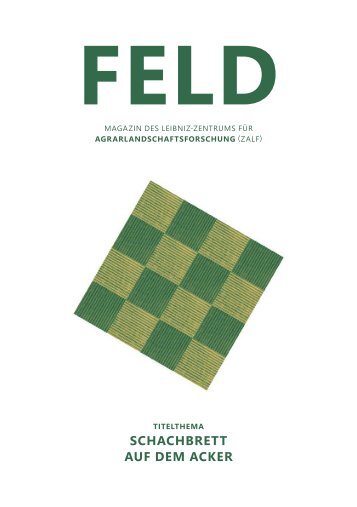
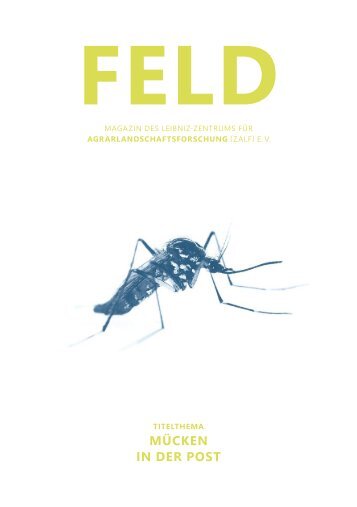

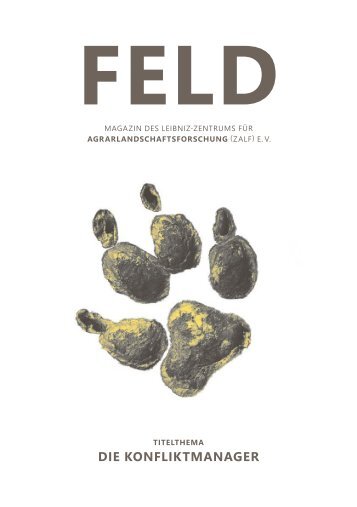
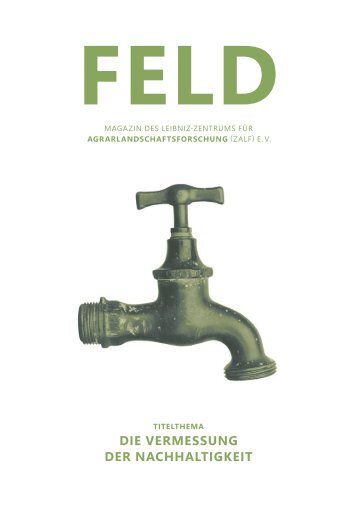
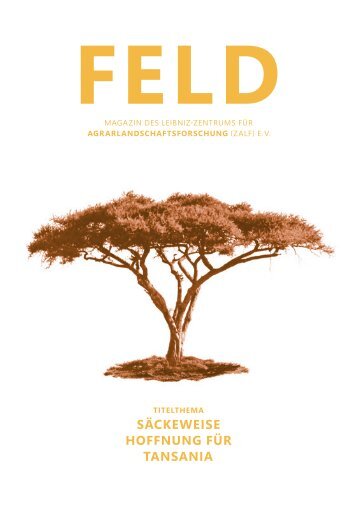
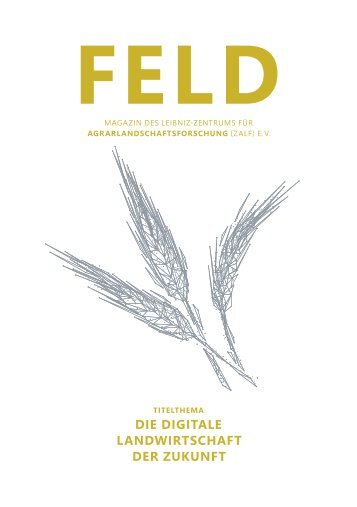
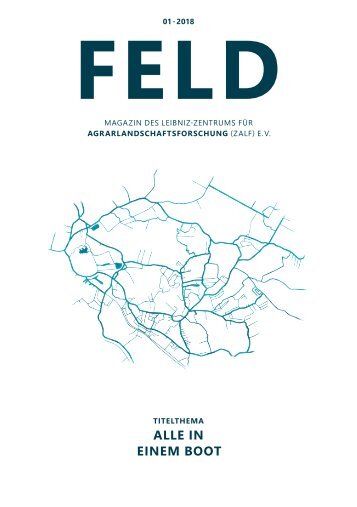
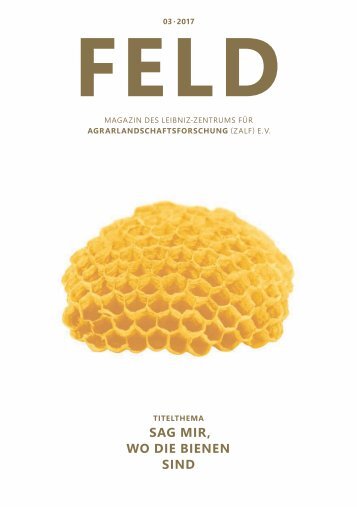
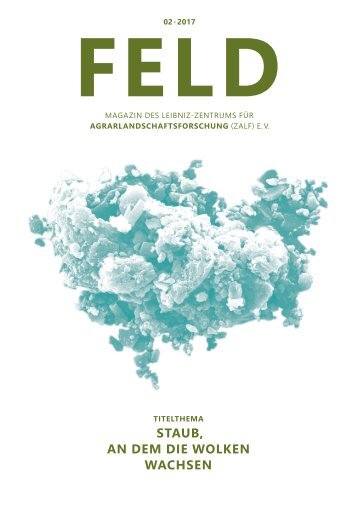

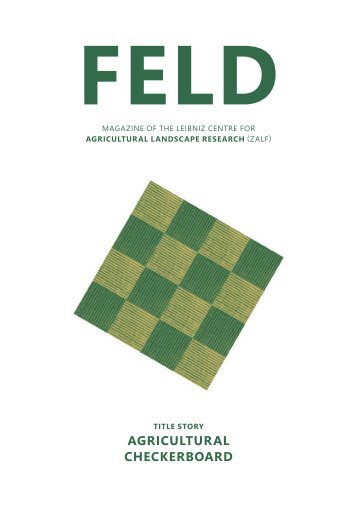

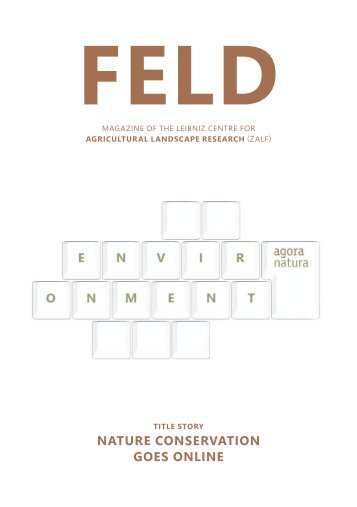








FOLLOW US
Twitter
Youtube
Instagram
LinkedIn